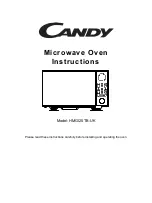
161 of 167
DE
FR
NL
EN
Place a glass or ceramic rod in the container when heating
liquids in order to prevent delayed boiling. Wait a few
moments after heating the liquid then take hold of the
container carefully and stir the liquid before you take it out of
the oven.
4.6. Cleaning and maintaining the device
ATTENTION!
Risk of damage!
Risk of damage due to improper use of the device.
Sensitive surfaces on the rotary plate. Avoid contact with
acidic foodstuffs. The rotary plate could be damaged.
Failure to clean the cooking device properly can damage the
surface which can in turn reduce the service life of the device
and may lead to dangerous situations.
Clean the device regularly and remove food residues.
Read the instructions on cleaning in section “11. Cleaning and
care” on page 187 when cleaning the door seals, the inside
of the oven and adjacent parts.
5. About
microwaves
Microwaves are high-frequency electromagnetic waves that have a warming effect
on the food within the oven. Microwaves heat all non-metallic objects. Therefore,
do not use any metallic objects in microwave mode. This heating effect works better
the higher the water content of the foodstuff.
To ensure optimal distribution of heat, let heated dishes stand for a minute or two
in the microwave oven after cooking.
5.6.1. The effect of microwaves on foodstuffs
•
Microwaves penetrate foodstuffs to a depth of around 3cm.
•
They heat up water, fat and sugar molecules (foodstuffs with a higher water
content are heated more intensively).
•
This heat then works its way – slowly – throughout the food and has a
defrosting, heating and cooking effect on the food.
•
The oven and the air in the oven are not heated (the food container is mainly
heated by the hot food).
•
Every foodstuff requires a certain amount of energy to cook or defrost. As a rule
of thumb we can say: high output – short time or low output – long time.
Summary of Contents for MD 15501
Page 101: ...102 de 192 ...
Page 192: ...05 2017 ...
















































